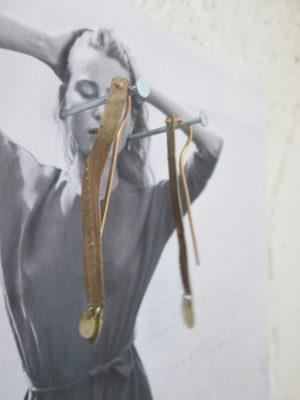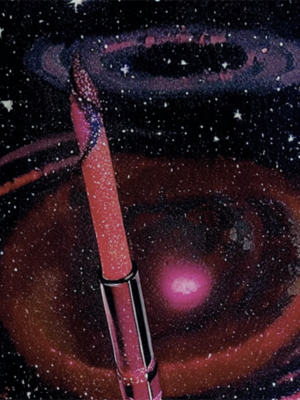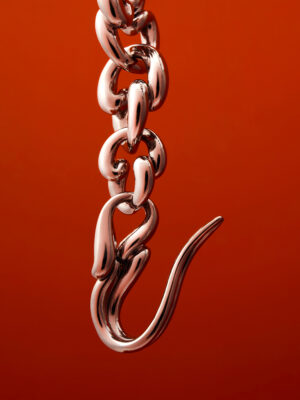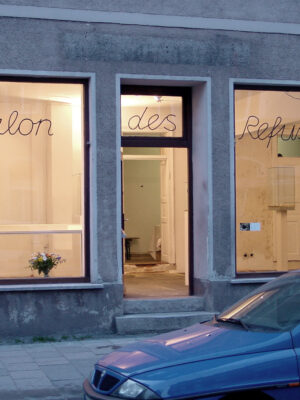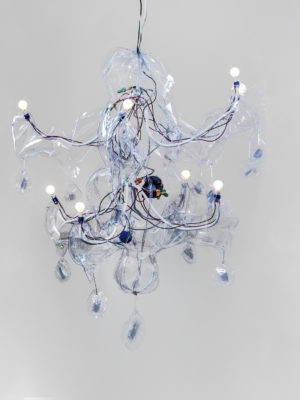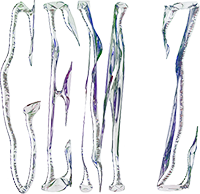His work is about the mundane in people’s lives, but it is also about lifting something out of the grey routine and making it glamorous. Sitting in a café in Munich, watching people interact and go about their everyday lives, Volker catches a glimmer of gold: it’s a tiny gold earring, dangling in the sunshine. The way it fits the girl who is wearing it, the nape of her neck and her short hair, is what drives his work. Erotic tensions of the mundane with just a sparkle of glamour, combined with his own sensibilities, are the ingredients that feed his work.
Encounters with jewellery and attempts to examine the way it acts on the body, inspired Atrops’ lifelong habit of sketching people. He documents the countless scenarios in which jewellery superbly resonates with a person’s style, attitude and figure. Sometimes, while drawing, he decides to add an extra detail. Like this one drawing, sketched at a concert, of a girl with dark hair, raising her arms in the air. She is wearing a necklace. In reality her armpits were shaven, but Volker added some hair. He followed his intuitive sense of composition and realized her hair, underarm hair and necklace could create a nice visual triangle.
These sketchbooks, filled with fine-lined thoughts and observations, collages and newspaper cutouts, manifest how Volker stays connected to culture. What I think he is trying to do is to show how jewellery comes from the streets, from the culture of today, and how it should directly connect to these stories, aesthetics and styles. Jewellery has the potential to speak the language of today. And who, if not contemporary jewellers, should engage in this discourse?
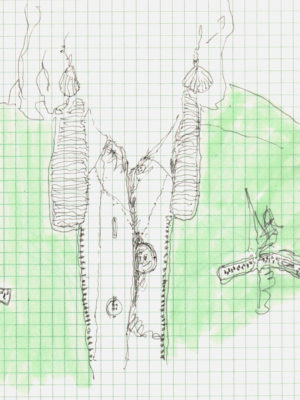
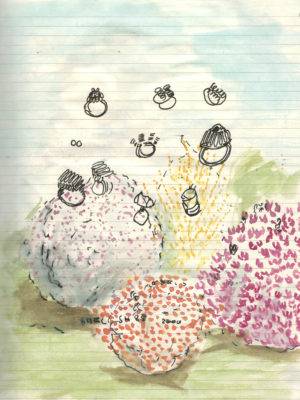
Volker’s observations, however biased by his rebellious nature, also show his concern about the field of jewellery. He is critical of the aesthetics that are beginning to solidify, and ‘what we do’ as ‘art jewellers’ becomes evermore uniform. Following their artistic ambitions, jewellers are trying to create ‘super pieces’ loaded with their personal experiences and complex concepts. They sometimes forget that regardless of the piece of jewellery, the wearer always comes first: jewellery needs to harmonize with the wearer’s style, outfit, hair, eyes. The piece of jewellery can only add to what is already there. While a modern artist constructs a world of his own in the confines of a gallery or a museum, a jeweller needs to always consider the wearer.
Following his logic, fashion could seem like a much more fertile ground for jewellery. In fashion, a whole outfit is created, and jewellery becomes a part of whatever ‘attitude’ is being achieved. For a few years Volker and his wife were interested in making fashion jewellery. He found out that overall, despite the artificiality of the scene, fashion is a ‘super field for jewellery, much better than art.’ However, he struggled with having to always make multiples and working really quickly and cheaply, while the final pieces had to look luxurious and expensive. This ‘mode of showing off’ was not what he was after…
Volker urges jewellery artists not to drift away, to stay close to the ‘centre’, to reinterpret it, and manipulate it. He is able to show the beauty and the possible opportunities our field can still venture within its relative confines. He talks about subcultures that have been incorporated into a larger cultural whole. Punk and later hip-hop had major influences on body image, fashion and jewellery styles.
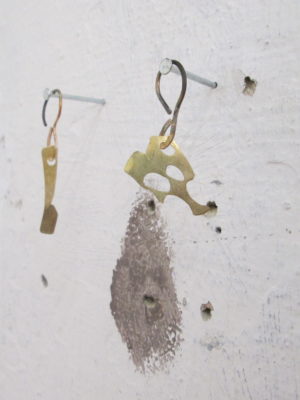
Back in the 80s, when punk as a cultural phenomenon was coming into full force, Volker made his way making jewellery through attempts to connect to the music scenes. He is more profoundly obsessed with music than with jewellery. For Volker, both music and jewellery are about changing and expressing something, attacking the status quo and expanding our view of the possible and the normal. But jewellery is more about being in control of your style, as it allows you to put something of your own into your daily life. At that time Volker and his friends responded to the bubbling cultural scene by creating what he refers to as ‘styles’: everything from trousers to jewellery. They didn’t limit themselves and played around mixing glam rock, hippie, and punk styles. They were sewing and making everything by hand, developing their own idiosyncratic look – ‘a group of freaks against the backdrop of peaceful German countryside’, as he puts it.
Inspired by Genesis P-Orridge of ‘Psychic TV’, these kids became curious about piercings, but because not many people had them at the time, it was still not yet clear how to properly pierce flesh; so they made fake nose rings that didn’t go all the way through the skin. At that time Volker was piercing a lot of earlobes: during countless parties, he developed a technique which he practiced in the dark with loud music blaring. It involved a hot needle, alcohol and a potato behind the ear to have something to prick against.
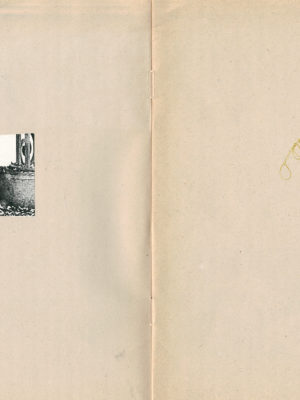
Energized by the alternative and underground styles, Volker still remained sensitive to jewellery’s archetypes, like rosaries. Growing up in a Catholic area, most of the local kids had them lying around. Volker started collecting rosaries and began cutting them up, mix-matching colours and designs, for example making one with two crosses. He also made a lot of earrings with crosses and beads. There is an old black and white picture of Volker wearing one of those rosary earrings: wet hair combed up, head half-turned, looking like he is dancing at a punk concert from his youth. The earring is somehow a reflection of his rebellious spirit: a kid from a small town, who doesn’t want to conform to what he sees around him. For me, this is one of the examples of how Volker is a jeweller who can ‘manipulate the centre’ – who can experiment with those archetypes and translate them through the context of whatever new influences are emerging.
Years later, during his time at the Munich Academy, Volker was busy with manipulating fine metal wire. He bent and twisted wire everywhere he went: at parties, at school, on the train. Similar to his fine-lined sketches, the line of the metal wire was a perfect medium to create three-dimensional drawings. He wanted to make a series of rings out of nothing but wire, only touch-soldering them later to strengthen them. He saw it as a way to directly go into the material, so that the resulting piece would still feel like a drawing. This desire to directly connect the idea, the technique and the material in a piece of jewellery is clearly visible in many of Volker’s works.
The continuous series of buttons he has been making on and off for the past twenty-five years is, perhaps, another good example. For years he has been collecting pictures from books and newspapers; ‘images that are special, but also totally ‘normal’ somehow.’ The images are very much about people’s culture and daily life. After collecting them for some time, he decided to put them into his jewellery. ‘I very much like the process of simply putting the transparent top over the image and just tearing it out of the picture.’ The buttons are the most simple and direct way of putting images on the body. Volker buys plastic bases and all he has to do is to clip in a picture. It’s so quick. ‘These buttons speak the ‘low’ and unpretentious language of DIY culture and the question may linger in the mind of the viewer: ‘What is he doing here? I can make this myself.’’ Sometimes Atrops, of course, makes work that stands on its own and doesn’t have variations.
Sometimes the piece is so strong there could be only one like it. But what happens in the case of the buttons is that each one is different, and can be viewed independently but it also draws from the overall series. The multitude of images tells stories about today’s culture, about people’s lives, about their anecdotes and tragedies. The uniform circle, the shape of the button unites them, but the content of each is different. What do you put in that circle? What kind of image do you choose: a pivotal moment, a film still or a story that could continue? ‘I want to use the images that I would wear. Simple. That is my criteria: Can I wear it? Do I want to wear it? Does it fit me? Does it fit other people?’
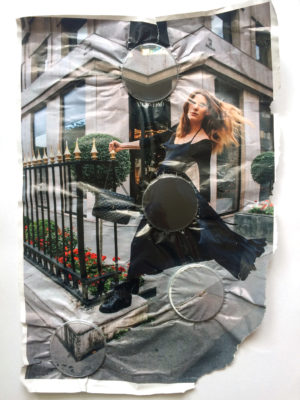
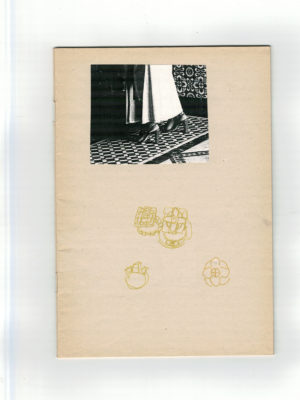
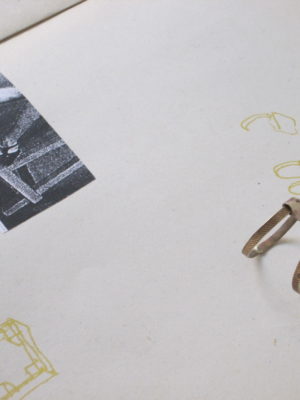
Volker Atrops doesn’t want to belong. He eludes definitions of craftsman, artist and goldsmith. The locations of Volker’s exhibitions often eschew the confines of the establishment: the galleries and museums. For years, he took over an antiquarian bookshop of a friend during Munich Jewellery Week, to present his work among old books and ancient rock crystals. It characterizes him as an ‘in-betweener’, a loner, an artist who pulls away, but in doing so he is able to pinpoint what is important or what appears to be lacking in the field of jewellery.
His latest Munich exhibition took place in a small, empty room, in which fine art exhibitions take place. The floor was covered with bright yellow straw; bunches of it were nailed to the walls. Intermingled with the straw was the glimmer of small, fragile gold earrings, displayed on the same type of nails hammered directly into the wall. The exhibition was titled ‘Gold’ and observed the connections between the work of a jeweller and the ‘Rumpelstiltskin’ fairy tale. ‘The gold colour of dead grass somehow reminds us of gold and so-called folk ‘gold star’ decorations are made of straw.’ These straw stars, for Volker, are the metaphor for what we do as jewellers. ‘You need a lot of skills to make those straw stars, and a person could make thousands, but what for? They are used only at Christmas. The rest of the time they are placed in a box somewhere. Like your grandmother’s knitting, these kinds of things that we keep in heaps, but don’t know what to do with…’
‘In the 80s there was this art and craft theory book [1] that discussed how people in arts and crafts do things very well, but there is no place for them.’ Spinning straw into gold is an intricate, impossible job, done in the dark of the night, in secret. For Volker, this is a metaphor for what can be a trap or the demise of a jeweller: locked in the studio, working on a new collection, only to be revealed on a special occasions – not Christmas – but at an exhibition – to be celebrated, applauded, and, eventually, put away in a box somewhere. If jewellery is not brought out to the streets, if it is not sought after and shared, if it doesn’t speak the language of today, it has little truth to it.
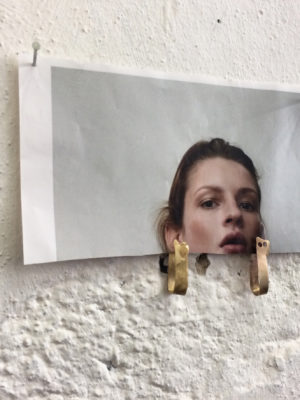
For our interview, Volker brought, together with his jewellery and drawings, a few carefully wrapped Ikea plates. The plates, decorated with colourful birds and butterflies had been painted by his young daughter, as a playful attempt to recreate a very special local style and language of the area Volker comes from. Three to four hundred years ago, the local people were known for making pottery. Regardless of which village a plate came from, it was always decorated in a similar manner. Somehow, these motifs belonged to the vernacular of the place; they were typical and familiar to these communities. ‘I think way how they scratch political-marriage- religious- natural-law-themes and proverbs, under the Sigmar Polke-like colour flow that is quite special and makes me feel home and brings me in a state of understanding. I think it’s odd to draw a bird on a plate and make circles around it, but I’ve seen birds on plates coming from different places and it really makes me wonder. I see these connections and I think that the reason to do it must be the same.’
Today, instead of supporting small local productions, people all over the world are constrained to buy faceless mass-produced items made by global conglomerates. ‘So, what can you do when most of the things are already done for you?’ We have no choice, but to ‘eat up’ products by big companies. Today the ‘supply’ by big corporations is so swift and massive, that even in subcultures, the demands are being quickly fulfilled by the industry and the know-hows are washed away into the mainstream. This cycle, that previously took years, now takes just one season. Whatever the product and whatever the group of people, the demand is met by a constant flow of production. But what if there is a way to claim back that voice of the individual maker. Here are Volker and his daughter, rebelling against the flood of standardized dull products. Reclaiming that vernacular has political power. It has to do with reclaiming decisions about what you want, what you create, what your surroundings are like. In a small circle, man to man, generation to generation, father to child.
‘My daughter once told me ‘you are not a jeweller’, and I asked her ‘why is that? I’m sitting here, making jewellery.’ ‘No-no’ – she said – ‘this is some kind of junk because none of it shines.’ And, actually, it was true, at that point I was making work that didn’t shine and she was busy making colourful shiny things, with glass and stones, like shiny decorations. Glossy. I asked myself: ‘Is it kitsch? Why does a thing have to be shiny?’ Some time later we received some Swarovski chains and my daughter made herself a necklace. She sat by the window, in a very calm Vermeer-like scene. There was nothing special about it. But the sparkling of her necklace made it somehow brilliant; it somehow took it out of the daily. It was something very jewellery that she made.’
[1] ‘The sense of order: a study in the psychology of decorative art’ by Ernst Hans Gombrich, Cornell University Press, 1979 ↑’
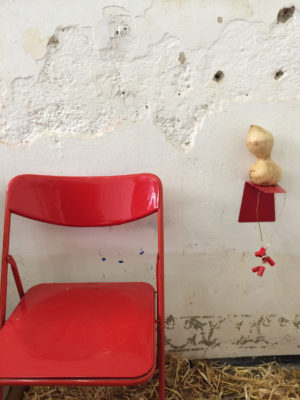
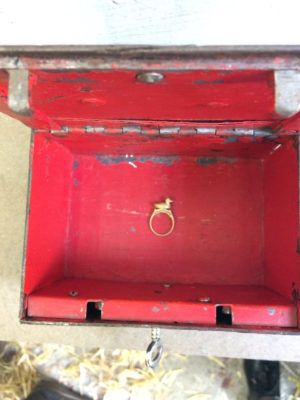
This article was first published in #5 Vernacular Issue, Current Obsession Magazine, 2016.
You can order the issue here
